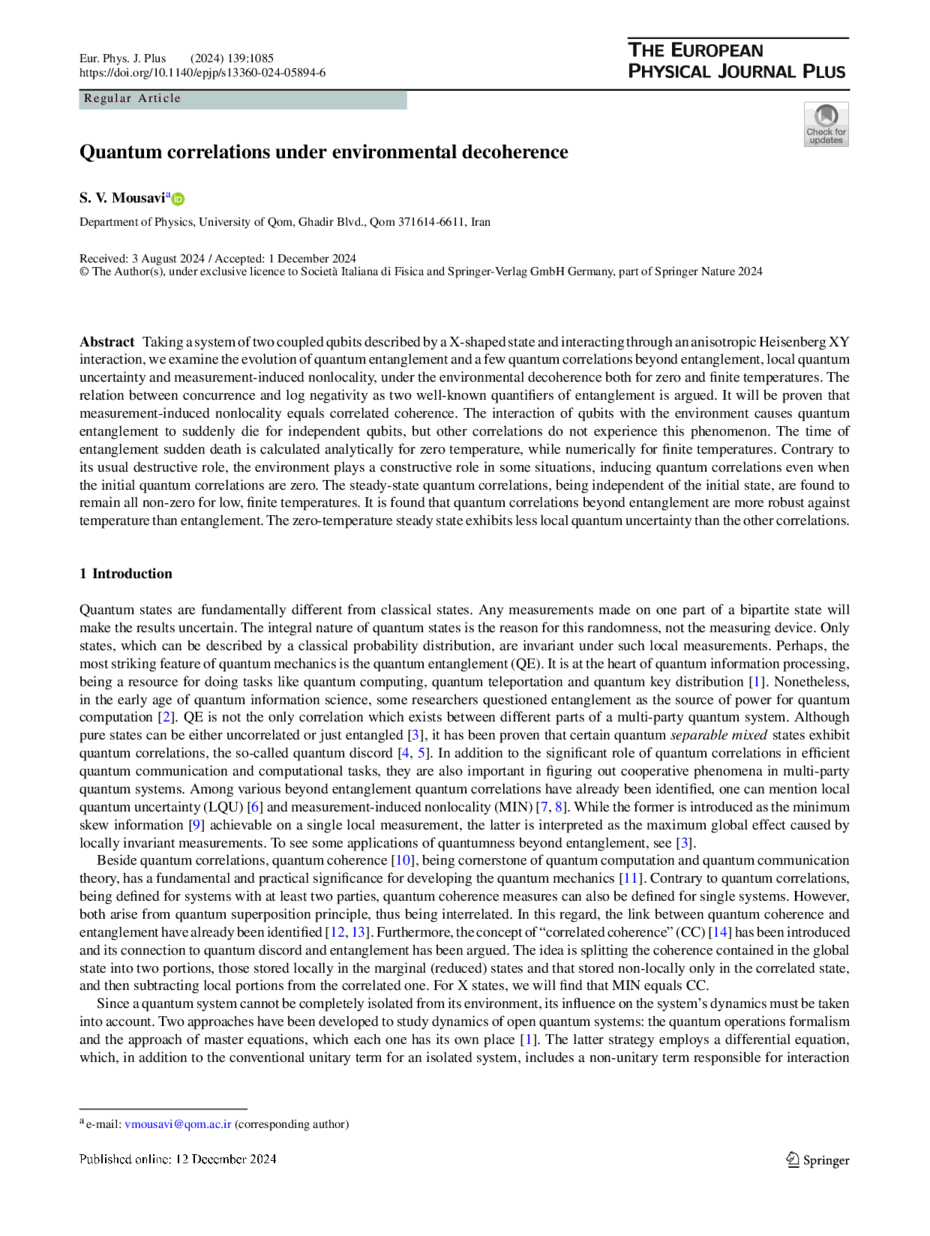https://doi.org/10.1140/epjp/s13360-024-05894-6
Regular Article
Quantum correlations under environmental decoherence
Department of Physics, University of Qom, Ghadir Blvd., 371614-6611, Qom, Iran
Received:
3
August
2024
Accepted:
1
December
2024
Published online:
12
December
2024
Taking a system of two coupled qubits described by a X-shaped state and interacting through an anisotropic Heisenberg XY interaction, we examine the evolution of quantum entanglement and a few quantum correlations beyond entanglement, local quantum uncertainty and measurement-induced nonlocality, under the environmental decoherence both for zero and finite temperatures. The relation between concurrence and log negativity as two well-known quantifiers of entanglement is argued. It will be proven that measurement-induced nonlocality equals correlated coherence. The interaction of qubits with the environment causes quantum entanglement to suddenly die for independent qubits, but other correlations do not experience this phenomenon. The time of entanglement sudden death is calculated analytically for zero temperature, while numerically for finite temperatures. Contrary to its usual destructive role, the environment plays a constructive role in some situations, inducing quantum correlations even when the initial quantum correlations are zero. The steady-state quantum correlations, being independent of the initial state, are found to remain all non-zero for low, finite temperatures. It is found that quantum correlations beyond entanglement are more robust against temperature than entanglement. The zero-temperature steady state exhibits less local quantum uncertainty than the other correlations.
Copyright comment Springer Nature or its licensor (e.g. a society or other partner) holds exclusive rights to this article under a publishing agreement with the author(s) or other rightsholder(s); author self-archiving of the accepted manuscript version of this article is solely governed by the terms of such publishing agreement and applicable law.
© The Author(s), under exclusive licence to Società Italiana di Fisica and Springer-Verlag GmbH Germany, part of Springer Nature 2024
Springer Nature or its licensor (e.g. a society or other partner) holds exclusive rights to this article under a publishing agreement with the author(s) or other rightsholder(s); author self-archiving of the accepted manuscript version of this article is solely governed by the terms of such publishing agreement and applicable law.





